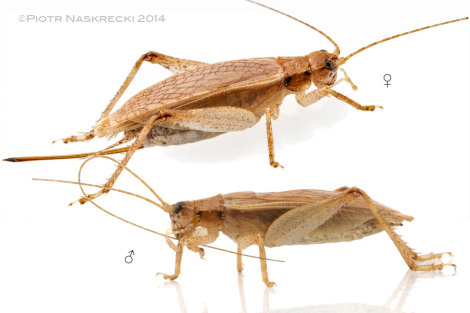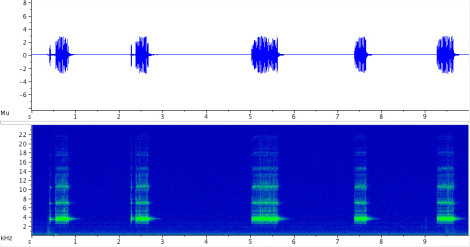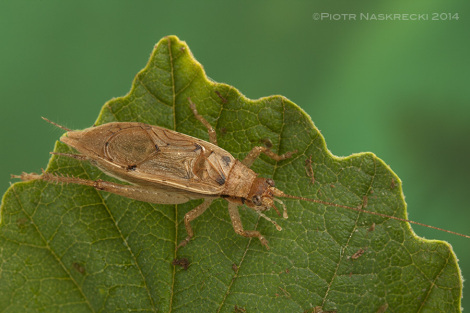A new voice in the chorus

A pair of Jumping Bush Crickets (Orocharis saltator) from Massachusetts. Females have long, needle-like ovipositors, which they use to lay eggs deep into the stems of plants.
Yesterday evening, right before the weather turned nasty, as I stood on the deck over my garden I suddenly caught a sound wave, one that I immediately recognized but had never before heard around my house. I ran to grab my recorder and was able to capture a snippet of the call. Seeing me pointing my microphone towards his house, a neighbor approached me warily, inquiring if I am trying to find the property line. I explained what I was doing and he left, satisfied in his knowledge that I am just feeble minded, and not trying to sue him for his land.
The call was that of the Jumping Bush Cricket (Orocharis saltator), a species I first encountered a couple of years ago in Cambridge, MA. Since then I have been looking for other places where this pretty animal might live, but never expected to find it in my backyard. It is a species that belongs to the chiefly tropical subfamily Eneopterinae, and makes a fine addition to the chorus of crickets around my house, which now includes 12 species:
Jumping Bush Cricket (Orocharis saltator)
Handsome trig (Phyllopalpus pulchellus)
Say’s trig (Anaxipha exigua)
Carolina ground cricket (Eunemobius carolinus)
Allard’s ground cricket (Allonemobius allardi)
Striped ground cricket (Allonemobius fasciatus)
Two-spotted tree cricket (Neoxabea bipunctata)
Snowy tree cricket (Oecanthus fultoni)
Spring field cricket (Gryllus veletis)
Fall field cricket (Gryllus pennsylvanicus)
House cricket (Acheta domesticus) (introduced)
Eastern ant cricket (Myrmecophilus pergandei)

Sonogram of the Jumping Bush Cricket (Orocharis saltator); click here to listen to the recording.

A male Jumping Bush Cricket (Orocharis saltator).
Filed under: Crickets, New England, Orthoptera


Piotr Naskrecki's Blog
- Piotr Naskrecki's profile
- 9 followers



